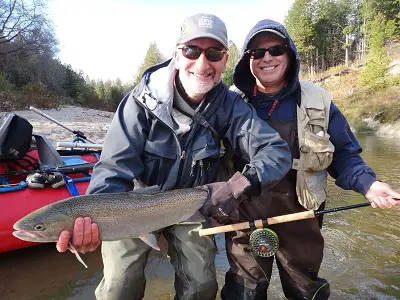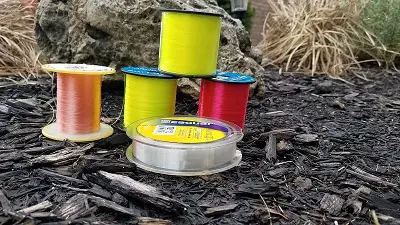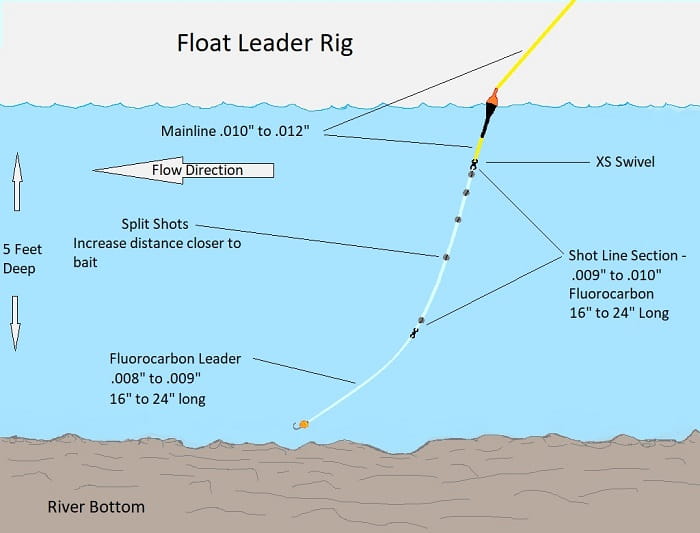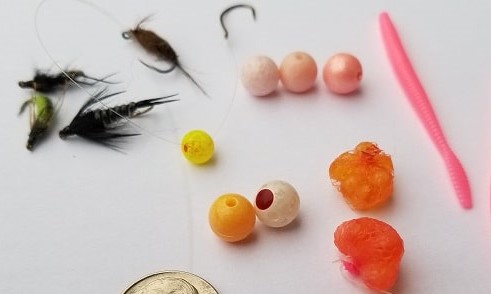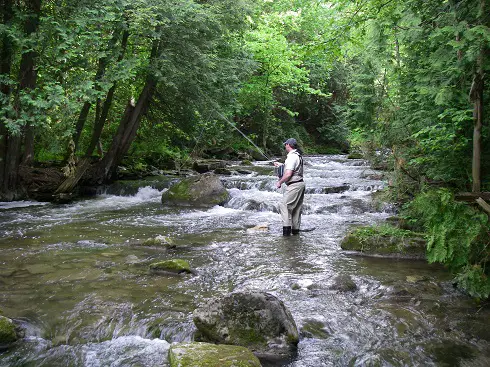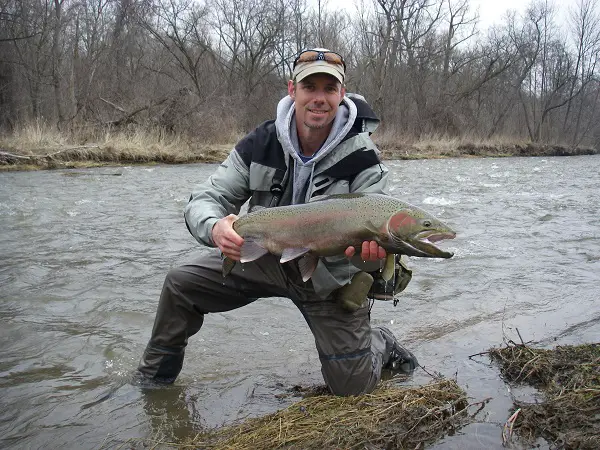Winter River Fishing Tips: How Guide Stay Warm and Dry
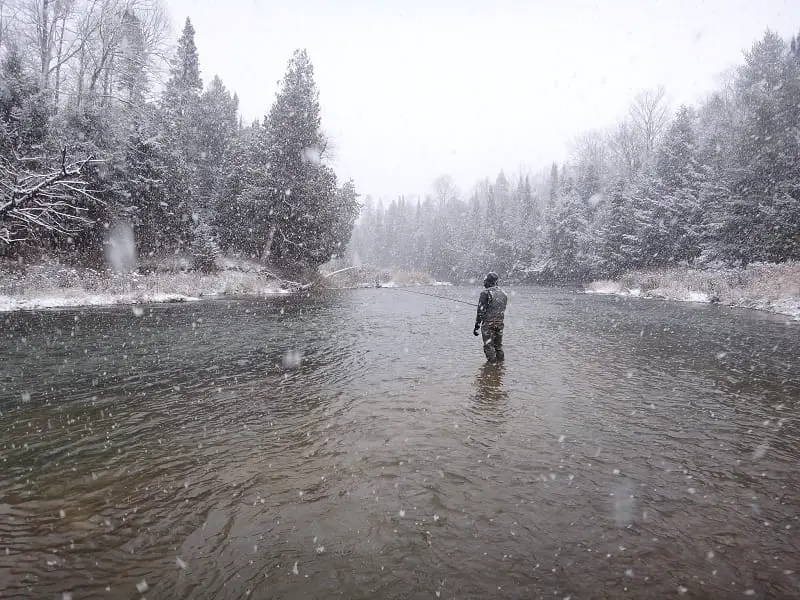
The first year I started guiding for steelhead out of a drift boat, my feet froze so much that I lost feeling in the tips of my toes for over three months. The doctor said I had nerve damage, and that if I kept doing this, I could lose my toes.
So I had to figure out a solution, and I did, which is why my feet are no longer free when I’m in my boat or standing waist-deep in ice-cold water. These are my tips and tricks for staying warm and comfortable when winter river fishing.
I will also include a tip that my customers love and appreciate.
1. Layering For Warmth
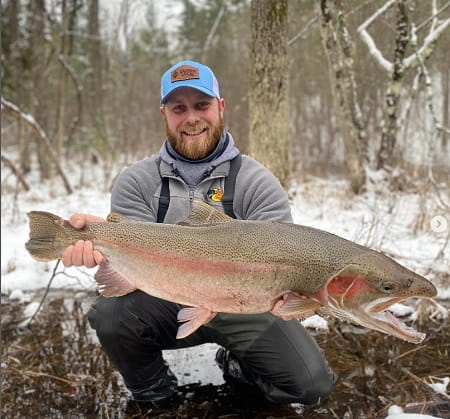
- Layering is crucial for trapping body heat and keeping you dry.
- Base Layer: Starting with a thin base layer designed to wick away moisture keeps me more comfortable and warmer.
- Mid Layers: adding a thicker thermal layer, or a mid-layer, and then a top layer keeps me extra warm and will allow me to take layers off If I need to.
- Exterior Layer: Finishing with an exterior layer of a wading jacket or insulated jacket is best.
I triple layer from my feet to my upper body, and then add my exterior layer.
Practical Tip: Avoid over-layering so much that you can’t move. Three thick sweaters or thick socks are not a good idea. Especially with socks, as they can compress your feet and restrict blood flow, leading to colder feet.
2. Electric Heating Devices
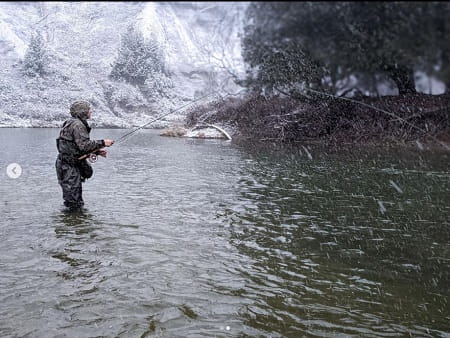
- Electric Feet Warmers: I now use electric heat insoles, or electric socks to keep my feet extra warm. At time I even have to turn them down.
- Hand Warmers: Disposable hand warmers are recommended for extra warmth for your hands. After your hands start to freeze, these are the only things that will warm them up.
- Benefit: These devices provide consistent heat, which is especially useful for long periods of exposure to cold.
3. Choosing the Right Waders
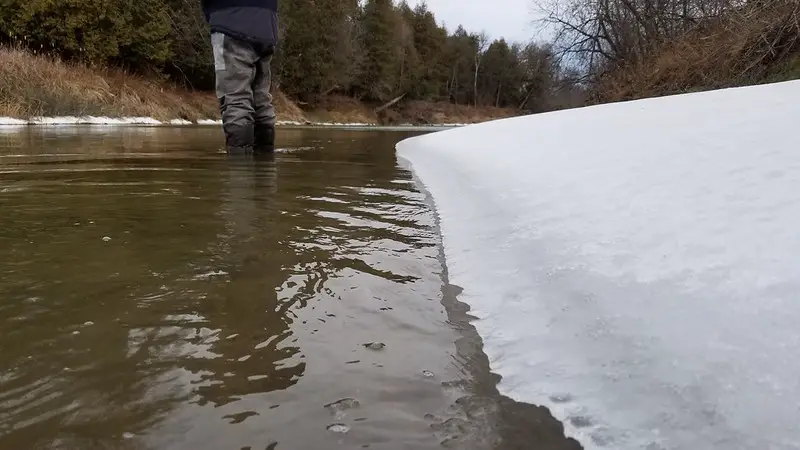
- Extremely Important: Waders are essential for keeping your lower body dry and warm. It wasn’t until I started wearing insulated boot foot waders that were two times bigger than my feet that my toes stopped freezing. My feet started sweating instead.
- My Advice: Opt for insulated boot foot waders two sizes larger than your foot for better insulation and comfort when wearing extra socks. Or buy a set of wading boots that are two or three sizes too big.
- Compression and Blood Flow: Larger boots prevent compression of your feet and allow for much better blood circulation. Compression is why anglers still have frozen feet even though they have multiple thick socks on.
4. Jackets and Outerwear

- Insulation: Since wading jackets aren’t insulated, wearing a thicker winter coat is advised.
- Layering: This adds an extra layer of warmth, protecting your core temperature.
5. Tips On Gloves
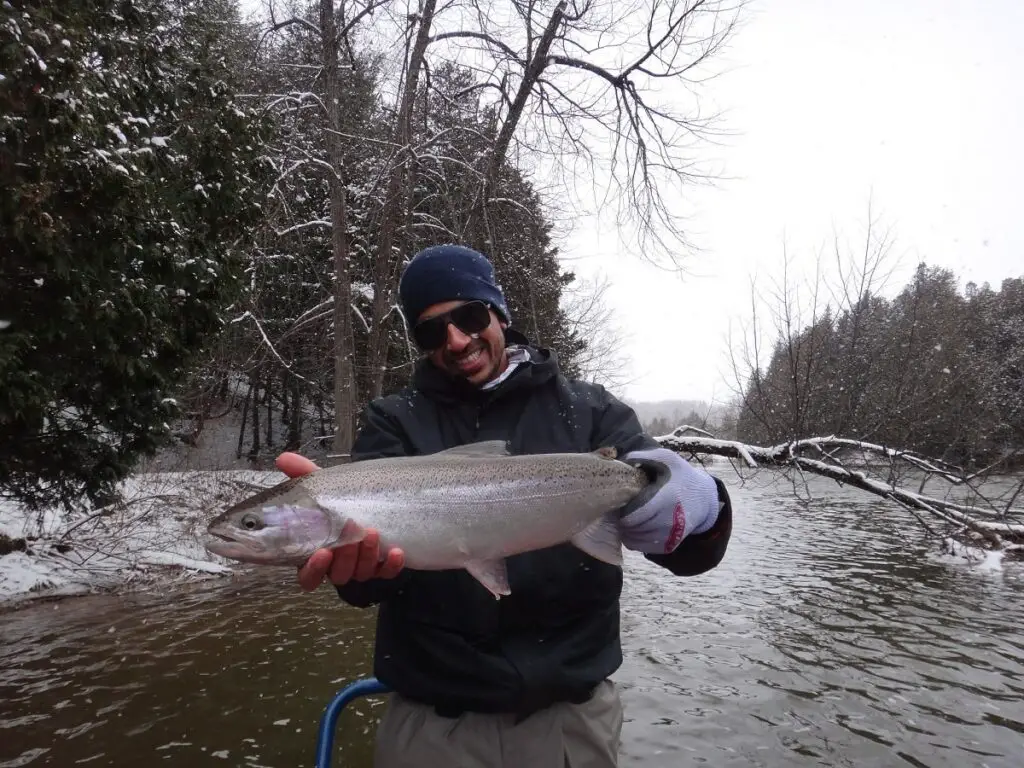
- Reason: Gloves can get wet, reducing their effectiveness, so always bring an extra pair to ensure you always have dry, warm gloves.
- Gloves: I recommend gloves like Simms Fold-Over Mitts for their functionality and warmth. Not all gloves are good to fish with.
- Extra Warmth: Hand warmer packs can be used inside the gloves for additional heat.
Pro Tip: this is a tip my customers love. Instead of handing my hand towel off my belt or from my fishing vest like many anglers do. I tuck it inside my wader up in my chest where it stays nice and warm. After releasing a fish and putting your hands in ice cold water, this warm towel is awesome and my customers always appreciate it.
6. Keep Moving
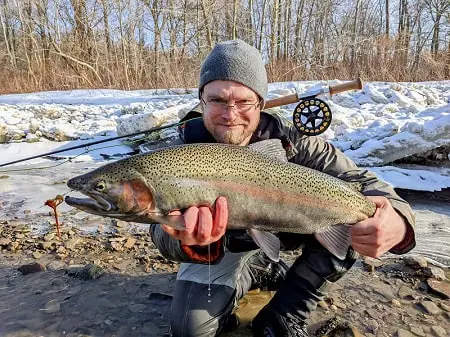
- Movement helps in generating body heat. If you start feeling cold, especially in your feet, walking or moving to a new spot can help warm you up.
- I will sometimes walk past my spot to the next spot just to create more heat in my feet and body.
9. Leg and Body Warmth
- Wading Pants: I wear thermal wading pants or thermal duck hunting pants that are meant for waders.
- Hoodies Are Best: A hoodie doesn’t just cover your head; it also traps warm air around your face and prevents the wind from blowing that warm air away. For me, a thick hoodie is a must.
10. Head Warmth
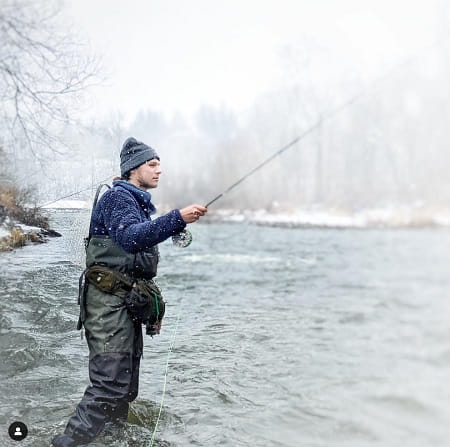
- Triple System: I recommend using a combination of a hooded sweatshirt, a hooded jacket, and a wool hat since studies show that some heat is lost through the head, making it crucial to keep it covered and warm.
Additional Tips
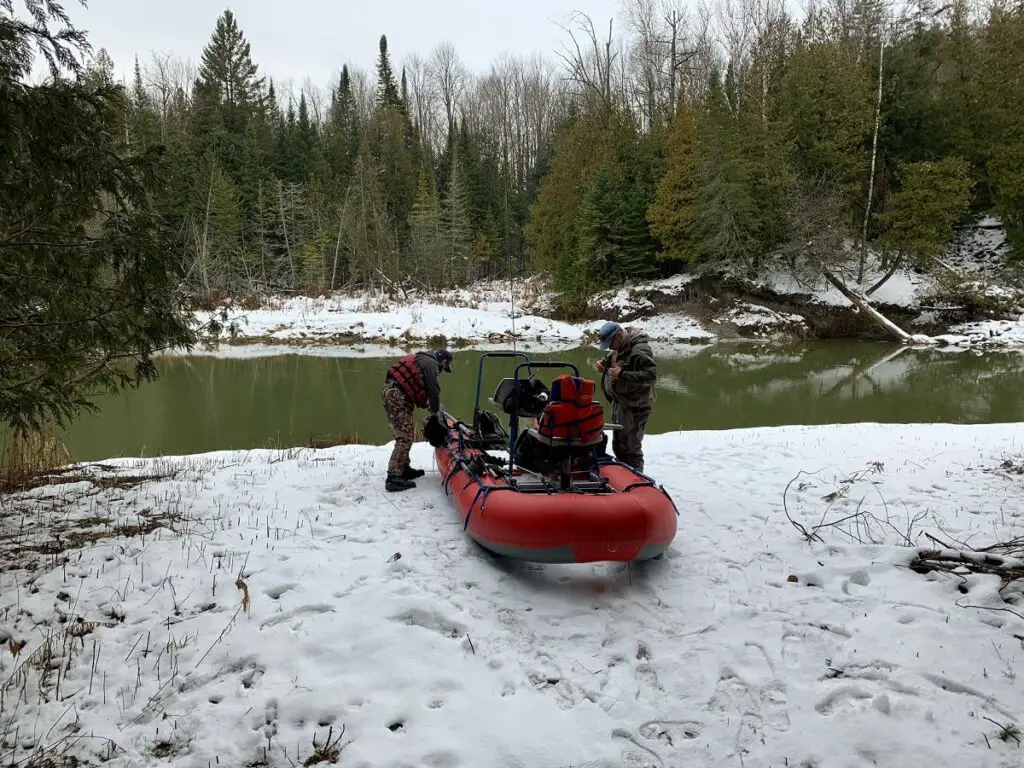
- Ice Prevention on Rod Guides: Techniques like dipping rod tips in water and using ice-off paste help prevent ice formation.
- Avoiding Sweat: I can not stress the importance of not sweating while layering up when you first arrive at the river or on your hike to the river. Sweating can lead to discomfort and cold later.
- See all the recommended winter gear that I use HERE.
I hope this helps you stay warm and dry while fishing for steelhead and trout in the winter.
Graham

